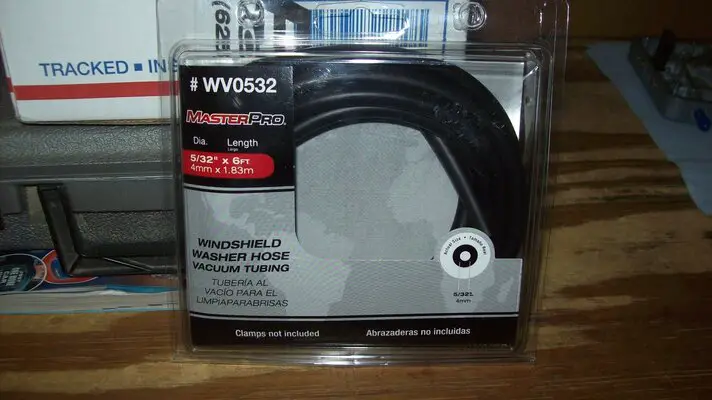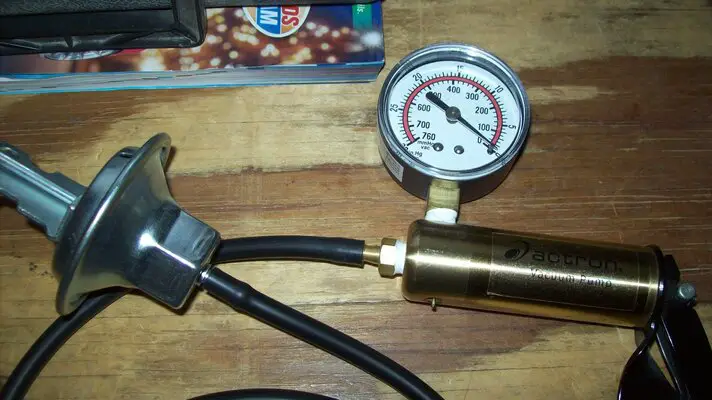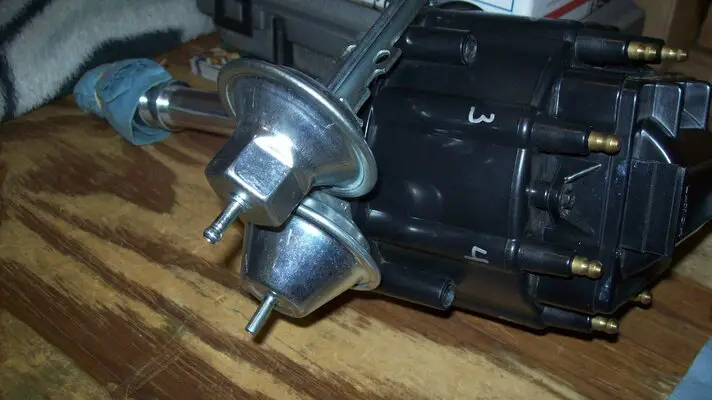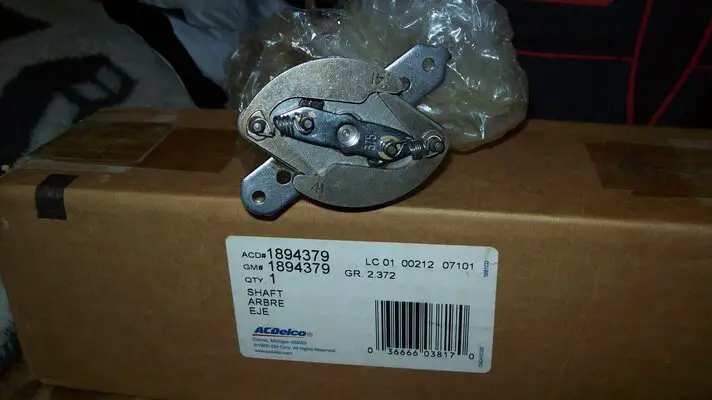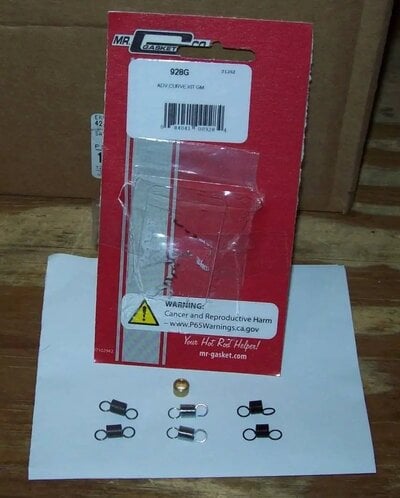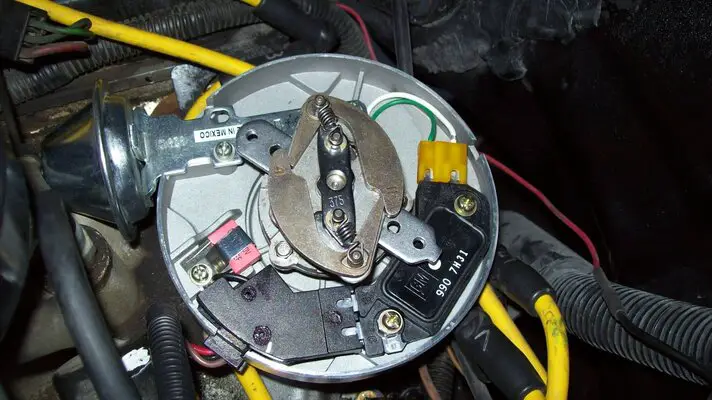Heres a good read on vacuum advance and timing.
distributor advance
- Thread starter jcelk
- Start date
You are using an out of date browser. It may not display this or other websites correctly.
You should upgrade or use an alternative browser.
You should upgrade or use an alternative browser.
Correction on that vacuum hose size... 5/32" ID prefered for a much tighter fit using mityvac type hand pumps to the vacuum advance can for testing, as well as from the carburetor.
Use can use 3/16" ID vacuum hose on the mityvac barbed end fitting, its fits rather snug and just as snug on the adjustable vacuum advance can only because of the flared end on the hard tube, but less snug with an OEM type vacuum advance can with a straight tube only, but you can correct that using a small zip tie to slightly tighten the hose to reduce the inside diameter for a much tighter fit, if thats the only size vacuum tubing you've got.
So in short... use either to suit your needs, if the hard tube has a flared end on both vacuum advance can and carburetor, 3/16" ID vacuum tube will do, but if one but not the other is a straight hard tube, then use the 5/32" ID vacumm tubing.
5/32" ID hose, then in use and vacuum advance can types, adjustable aftermarket(top), OEM style(bottom), aftermarket mechanical distributor i swaped from the adjustable to the fixed napa 5degree(dist)/10degree(crank).
Use can use 3/16" ID vacuum hose on the mityvac barbed end fitting, its fits rather snug and just as snug on the adjustable vacuum advance can only because of the flared end on the hard tube, but less snug with an OEM type vacuum advance can with a straight tube only, but you can correct that using a small zip tie to slightly tighten the hose to reduce the inside diameter for a much tighter fit, if thats the only size vacuum tubing you've got.
So in short... use either to suit your needs, if the hard tube has a flared end on both vacuum advance can and carburetor, 3/16" ID vacuum tube will do, but if one but not the other is a straight hard tube, then use the 5/32" ID vacumm tubing.
5/32" ID hose, then in use and vacuum advance can types, adjustable aftermarket(top), OEM style(bottom), aftermarket mechanical distributor i swaped from the adjustable to the fixed napa 5degree(dist)/10degree(crank).
Attachments
Last edited:
Ive been know to make my own bushingss from a hammered thin tire weight and cut them with a knife blade .I can concure some aftermarket weight kits"might be worse then stock ones, ...you first probly just try ther springs on your weights even mix and match colors .I'm glad to read the posts on vacuume canisters I suppose the adjustable ones are the way to go, although my current one isn't..I'm no expert but I thought trans dapt sold a nice curve kit at one time....of coarse gas and compression effects these issues..
Last edited:
i read a good article by lars also does any one know to but the little bushings that the factory weights pivot on the ones in the spring kit are to large ? also a long shot people are talking about the number 41 weights with a 375 center anyone know where i can find them ? I;m going to rig up a distributor tester this winter always wanted to do that should be fun thanks for everyone's help happy holidays to all
hi guys i have a 79 elky a regular non ccc hei ignition. mild 350 engine 350 trans... had no mechanical advance took it apart the weight bushing are shot the weights jambed so i ordered a recurve kit should i put in the advance stops that comes in the kit ? which springs to use ? the shaft bushings are good no wobble . how much up and down play should i have at the gear i can shim it now while its all apart thanks in advance
There is no rule on whether you should put in the advance stops but typically most stock distributors have alot of spread between idle and max mechanical advance. That's why the stops exist.
Basically you are looking for 10-15 of initial advance. This is idle with the vacuum advance disconnected.
30-35 total advance. This is for max power. You find this number when analyzing power on a dyno or trap speed at the dragstrip.
50 or so advance while light throttle cruising. Only possible with manifold vacuum advance.
Lighter springs will allow idle to total to occur lower in the rpm range. The stoppers will limit the idle speed advance to mechanical advance.
At the time, when i was using an aftermarket mechanical HEI distributor, i too was looking for those coveted GM 41/375 weights by themselves, they give 22degrees of mechanical advance, and after searching for some time, i finally found a set on ebay years ago, but they happened to part of the center shaft NOS in the box. They were used with the ZZ4 crate engines, GMs recomendation of 10degree intial, 22degree mechanical advance for 32degrees total timing, along with a 10degree(dist)/20degree(crank) vacuum advance can, and with the heavy springs supplied by GM, total came in around 4000rpm, made for a lazy feeling and under performing engine IMO for warranty purposes.i read a good article by lars also does any one know to but the little bushings that the factory weights pivot on the ones in the spring kit are to large ? also a long shot people are talking about the number 41 weights with a 375 center anyone know where i can find them ? I;m going to rig up a distributor tester this winter always wanted to do that should be fun thanks for everyone's help happy holidays to all
Attachments
This was a good 2 1/2 yrs ago when i did this, i replaced the whole shaft assembly from the aftermarket one with the ZZ4 one.
From what i remember, i tried the heavy springs that came with the shaft first, the car drove like a turd, because of the absurdly slow rate of advance it gave.
I then replaced them with the, what seemed to be medium springs from the aftermarket shaft and it drove a lot better, i didnt run with the replaced shaft assembly for that long, i put the aftermarket distributor back the way it was,
I did buy the Mr Gasket Advance Curve Spring kit(928G), but never got around to trying them out, they have light, medium and heavy springs in pairs to use together or mix light with medium, medium with heavy, etc, you can go that route and see what works best for you since every engine requirements differ.
As you can see from the second picture, along with changing out the shaft assembly with the 41/375 weights and heavy springs,, i also upgraded the HEI module with an actual GM unit(990) and the napa 5degree(dist)/10degree(crank) fixed vacuum advance can, i ran it off full manifold vacuum for a 15degree initial and it helped greatly instead off ported vacuum off the holley carburetor.
From what i remember, i tried the heavy springs that came with the shaft first, the car drove like a turd, because of the absurdly slow rate of advance it gave.
I then replaced them with the, what seemed to be medium springs from the aftermarket shaft and it drove a lot better, i didnt run with the replaced shaft assembly for that long, i put the aftermarket distributor back the way it was,
I did buy the Mr Gasket Advance Curve Spring kit(928G), but never got around to trying them out, they have light, medium and heavy springs in pairs to use together or mix light with medium, medium with heavy, etc, you can go that route and see what works best for you since every engine requirements differ.
As you can see from the second picture, along with changing out the shaft assembly with the 41/375 weights and heavy springs,, i also upgraded the HEI module with an actual GM unit(990) and the napa 5degree(dist)/10degree(crank) fixed vacuum advance can, i ran it off full manifold vacuum for a 15degree initial and it helped greatly instead off ported vacuum off the holley carburetor.
Attachments
Last edited:
When you consider the so called vacuum advance part it's more of a devance (retard) as it spends a lot of time retracting from the default advance...somebody needs to make a circuit that works with a map sensor and drives a dedicated servo too, lol...
Last edited:
Shims? Oh, never mind. I just realized this is Chevy distributor being discussed. IIRC, aluminum distributor housings/gear play on Chevy V8 is typically 0.020". Shim to that spec for the factory goal. I could be wrong.Yes you can shim the lower gear to limit end play. Generally I shoot for as much initial timing as I can put in it and not have starting problems. Try for a total of mechanical timing of 34-36 and see where you wind up. The issue with some stock distributors is the timing AMOUNT of advance. If you can dial in 12-16 initial and then advance to 34-36 by 3000 you're good. I've had them where they kept advancing to 44-46. This is where you will have to limit the advance by blocking off the slot that the shaft moves in. The more timing you can put in at idle the less carburetor opening it will need to achieve the same idle. I bet your stock distributor might have only advanced to mid 20's in the rpm range it was working in. Just a simple timing adjustment can probably find 10 hp or more by moving it up. I found 4 hp on the dyno on my 540 dropping the timing from 40 total to 36.
FWIW, Olds V8 distributors pull the gear down since they spin the other way, thus no shims needed.
Similar threads
- Replies
- 7
- Views
- 200
- Replies
- 3
- Views
- 152
- Replies
- 1
- Views
- 252
GBodyForum is a participant in the Amazon Services LLC Associates Program, an affiliate advertising program designed to provide a means for sites to earn advertising fees by advertising and linking to amazon.com. Amazon, the Amazon logo, AmazonSupply, and the AmazonSupply logo are trademarks of Amazon.com, Inc. or its affiliates.


